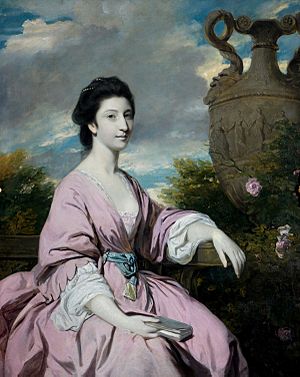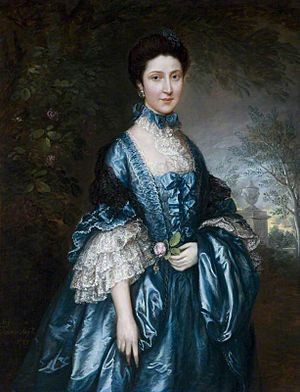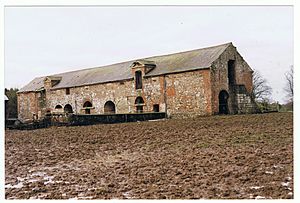Theodosia Meade, Countess of Clanwilliam facts for kids

Theodosia Hawkins-Magill was a very important lady in Ireland. She was born in Brighton on September 5, 1743. She passed away in Brighton on March 2, 1817. Theodosia was a great heiress, meaning she inherited a lot of land. She owned large areas in County Down, Ireland. Later in her life, she became known as the Countess of Clanwilliam.
Contents
Theodosia's Early Life and Family
Theodosia was the daughter of Robert Hawkins-Magill. He owned Gill Hall in Dromore, County Down. Her mother was Anne Bligh. Anne was the daughter of John Bligh, 1st Earl of Darnley.
When Theodosia was young, two famous artists painted her. These artists were Joshua Reynolds and Thomas Gainsborough.

On August 29, 1765, Theodosia married John Meade. He was the son of Sir Richard Meade. John Meade received several important titles. On November 17, 1766, he became Baron Gillford and Viscount Clanwilliam. Later, on July 20, 1776, he was made the Earl of Clanwilliam. All these titles were part of the Irish peerage.
Theodosia and John Meade owned a lot of land. By 1799, their estates were worth a huge amount of money. This made them one of the wealthiest families in Ireland.
The Family's Homes and Estates
Theodosia lived in two main homes. One was Gill Hall. The other was Burrenwood. Burrenwood was a special house. It was a cottage ornée. This means it was a fancy house designed to look like a charming, rustic cottage. It was built near Castlewellan. This area was between her mother's house at Castle Ward and her family's old home, Gill Hall.
Burrenwood: A Special Cottage
Burrenwood is located near beautiful forest parks. These include Tollymore Forest Park and Castlewellan. It is also close to the Mourne Mountains. The house is just a short distance from Dundrum Bay at Newcastle, County Down. Burrenwood was similar to other unique homes. Examples include the Swiss cottage, Cahir in Tipperary, and Derrymore in Bessbrook. It was also like the Petit hameau de la Reine at Versailles in France.
Gill Hall: A Haunted History
Gill Hall became famous for a spooky story. It was known as one of the most haunted houses in Ireland. This was due to the "Beresford ghost story."
The story happened on October 14, 1693. John Power, the 2nd Earl of Tyrone, told his friend Nichola Sophia about his own death. He said he would die that very day. This was a sign they had agreed upon. It was meant to show that there was life after death. Nichola Sophia was the sister-in-law of Sir John Magill.
Today, the main house at Gill Hall is gone. It was destroyed many years ago. Only a part of the stable block still stands.


